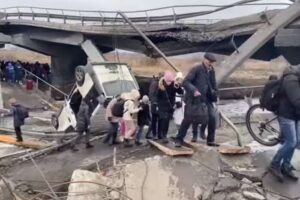
Losses among civilians from February 24, 2022, when Russia started the war against Ukraine, amounted to 1,761 civilians (in the report a day earlier 1,663), including 636 dead (596), reports the Office of the United Nations High Commissioner for Human Rights (OHCHR).
“OHCHR believes that the actual figures are considerably higher, especially in Government-controlled territory and especially in recent days, as the receipt of information from some locations where intense hostilities have been going on has been delayed and many reports are still pending corroboration,” the UN said in the document.
According to him, this applies, for example, to Izium (Kharkiv region), and Mariupol and Volnovakha (Donetsk region) where there are allegations of hundreds of civilian casualties. These figures are being further corroborated and are not included in the above statistics.
“Most of the civilian casualties recorded were caused by the use of explosive weapons with a wide impact area, including shelling from heavy artillery and multi-launch rocket systems, and missile and air strikes,” the UN said in the report.
According to confirmed UN data, some 127 men, some 91 women, ten boys and six girls killed, while the gender of 30 children and 372 adults has not yet been determined.
Among the 1,125 injured, some15 girls and four boys, as well as 43 children, whose gender has not yet been determined.
Compared to the previous day, according to the UN, three children were killed and five more were injured.
OHCHR said that in Donetsk and Luhansk regions, as of midnight March 14, there were 122 (111) dead and 442 (431) injured in government-controlled territory, and 26 (26) dead and 130 (127) injured in territory controlled by self-proclaimed “republics.”
In other regions of Ukraine under government control (Kyiv, as well as in Zhytomyr, Zaporizhia, Kyiv, Sumy, Odesa, Mykolaiv, Kharkiv, Kherson, Dnipropetrovsk, Cherkasy and Chernihiv regions), the UN recorded 488 (459) killed and 553 (509) wounded.
The summary also states that, according to the Presidential Commissioner for Children’s Rights and Child Rehabilitation, as of 09:00 on March 14, 90 (85) children were killed and more than 100 children were injured in government-controlled territory.
OHCHR also notes the report of the National Police of Kharkiv region, according to which, as of 18:00 on 13 March, 212 civilians (205) had died in the region.
The increase in the figures in this report compared to the figures in the previous report should not be attributed only to new cases that occurred on March 13, since OHCHR also verified a number of cases that occurred in previous days during the day, according to the document.
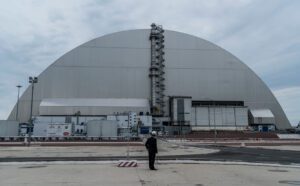
Power supply has been restored to the Chornobyl Nuclear Power Plant (NPP) site after repeated damage from hostilities, the International Atomic Energy Agency (IAEA) said.
“Ukraine has informed the IAEA that external power had again today been restored to the Chornobyl Nuclear Power Plant after line had been again damaged by the occupying forces,” the IAEA said in a tweet on the night of Monday to Tuesday.
Other details are not reported.
The IAEA website notes that the “regulatory authority” informed the agency about the resumption of power supply to the Chornobyl nuclear power plant on the afternoon of March 14.
“The regulatory authority told the IAEA that at 13:10 CET external power had again been restored and that staff at the Chornobyl NPP had restarted operations to reconnect the NPP to the grid,” the agency said.
The city council of Slavutych, a satellite city of the Chornobyl nuclear power plant, on its Facebook late on Monday evening announced that the city’s power supply had been resumed and the connection of residential buildings would be carried out gradually.
As reported with reference to NPC Ukrenergo, on March 14, Russian invaders again damaged the high-voltage line supplying power to the Chornobyl nuclear power plant and Slavutych, after the company had repaired it.
The NPP site and Slavutych were de-energized on March 9 due to shelling of energy infrastructure by Russian troops.
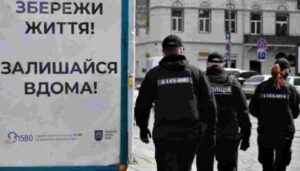
A curfew is introduced in Kyiv for a day and a half from 20:00 on March 15 to 07:00 on March 17, mayor of the capital Vitali Klitschko said.
“From 20:00 on March 15 to 07:00 on March 17 is a curfew in Kyiv,” Klitschko wrote on his Telegram channel.
The mayor stressed that at the moment there is a difficult and dangerous moment in the capital.
“Prohibition of movement around the city without special passes. You can only go out to reach the shelter. The curfew will be in effect until 07:00 am on March 17,” he stressed.
The mayor asked all the people of Kyiv to prepare for the fact that they will have to stay at home for two days or, on an alarm signal, in a shelter.
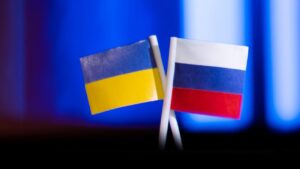
The delegations of Ukraine and the aggressor country resumed negotiations after a technical pause taken a day earlier, Ukrayinska Pravda writes, citing a member of the delegation, head of the Servant of the People faction in the Verkhovna Rada David Arakhamia.
“Negotiations are already underway,” Arakhamia said in a comment to the publication on Tuesday.
At the same time, members of the Ukrainian delegation have so far refrained from making any other comments.
As reported, on March 14, a technical pause was taken in the negotiations between the Ukrainian and Russian delegations on ending the war for additional work in working subgroups and clarification of individual definitions. Later, President of Ukraine Volodymyr Zelensky said that the Ukrainian delegation worked well, and that the negotiations themselves would continue on March 15.
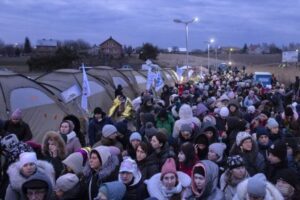
Russia’s military offensive against Ukraine forced 2.952 million people to leave the country in 19 incomplete days of the war in search of safety, protection and assistance, the Office of the United Nations High Commissioner for Refugees (UNHCR) said as of 13:00 (Kyiv time) on March 14.
The Office said the Ukrainian-Polish border accounted for 60.7% of all refugees.
According to the UNHCR, the number of refugees from Ukraine to Poland since February 24, when Russia started the war, has reached 1.791 million.
Romania received 453,430 people, of which 250,800 people were in transit through Moldova, the department said.
According to it, some 263,890 people arrived in Hungary, some 213,000 in Slovakia, some 86,380 in Moldova.
According to the UNHCR, the flow of refugees from Ukraine to Russia amounted to 142,990, to Belarus (data for March 13) some 1,230.
“As the situation continues to evolve, about 4 million people may leave Ukraine,” the UNHCR said.
According to its estimation two days ago, there are now at least 1.85 million internally displaced persons (IDPs) in Ukraine and another 12.65 million directly affected by the war.
UNHCR said that by the middle of 2021 there were 53,470 Ukrainian refugees in the world who applied for the appropriate status, of which 36,490 were in Europe.
As of the middle of 2020, the UNHCR estimated the Ukrainian diaspora in the world at 6.1 million, including 5 million in Europe.
The organization said the right to free movement within the Schengen area means that there are very few border controls in the European Union, so arrivals in Hungary, Poland and Slovakia only reflect border crossings in these countries, however, according to the UN, a large number of people moved to other countries.
In addition, UNHCR does not take into account persons from border countries who leave Ukraine and return home.

Yoghurt, kefir, mineral water, raw tobacco, salt, hydrogen, photographic plates and film, doors, windows and their frames, cigarette paper, cotton wool, tights, socks and bras, bags and packaging bags are new items included in the list goods of critical import of Ukraine.
According to government resolution No. 266 of March 13, which was published on its website, the list is also replenished with glass and mirrors, silver, various types of metal products, aluminum metal structures, pumps, printed circuits, trailers and semi-trailers.
As reported, after the start of Russia’s military aggression on February 24, the government on the same day by resolution No. 153 determined a list of critical import goods, for the purchase of which the National Bank of Ukraine allows buying foreign currency. This is the tenth expansion of this list since it was originally approved.
BAGS, BRAS, COTTON WOOL, DOORS, FRAMES, IMPORT, MINERAL WATER, RAW TOBACCO, SALT, SOCKS, WINDOWS, YOGHURT